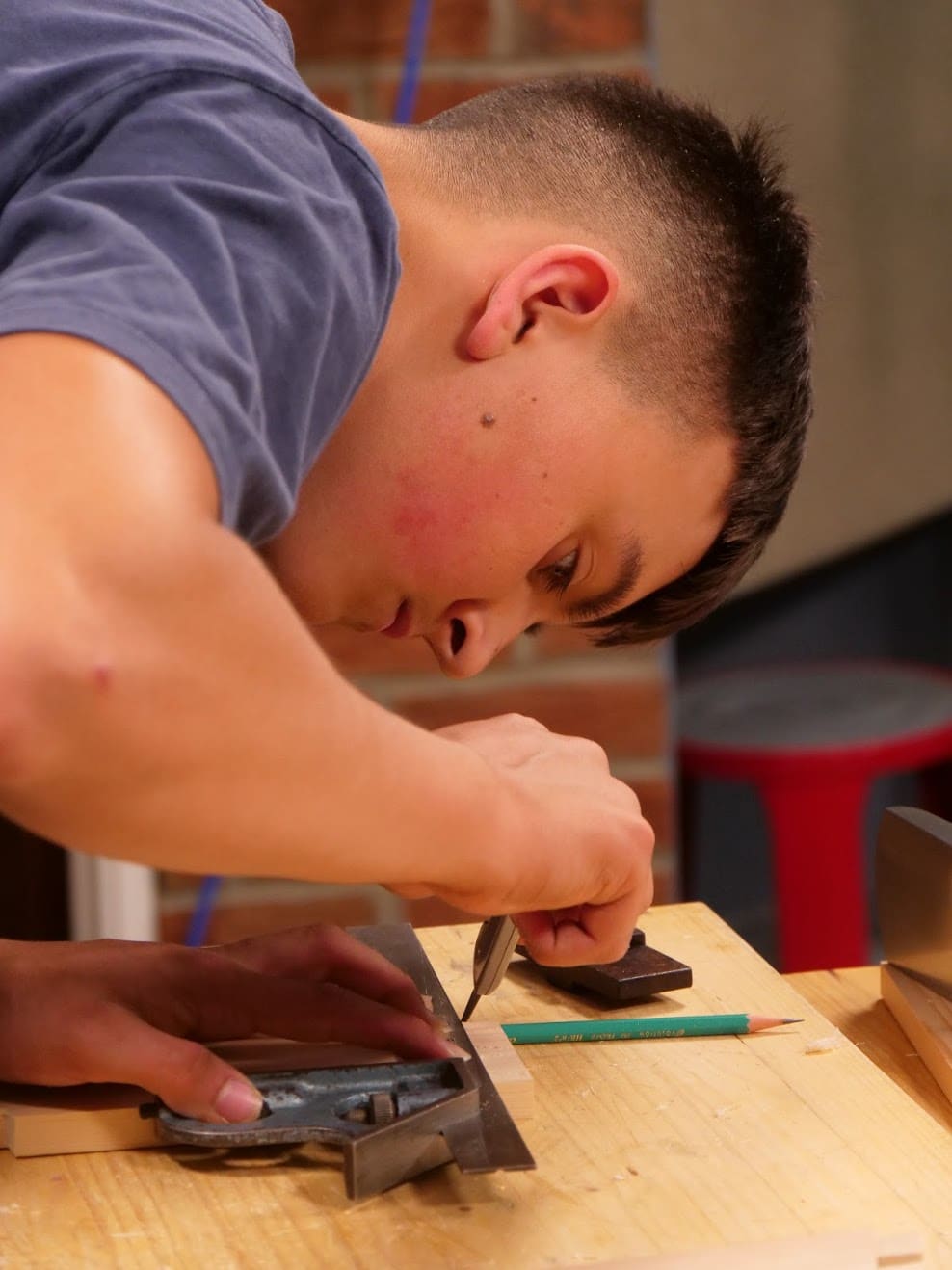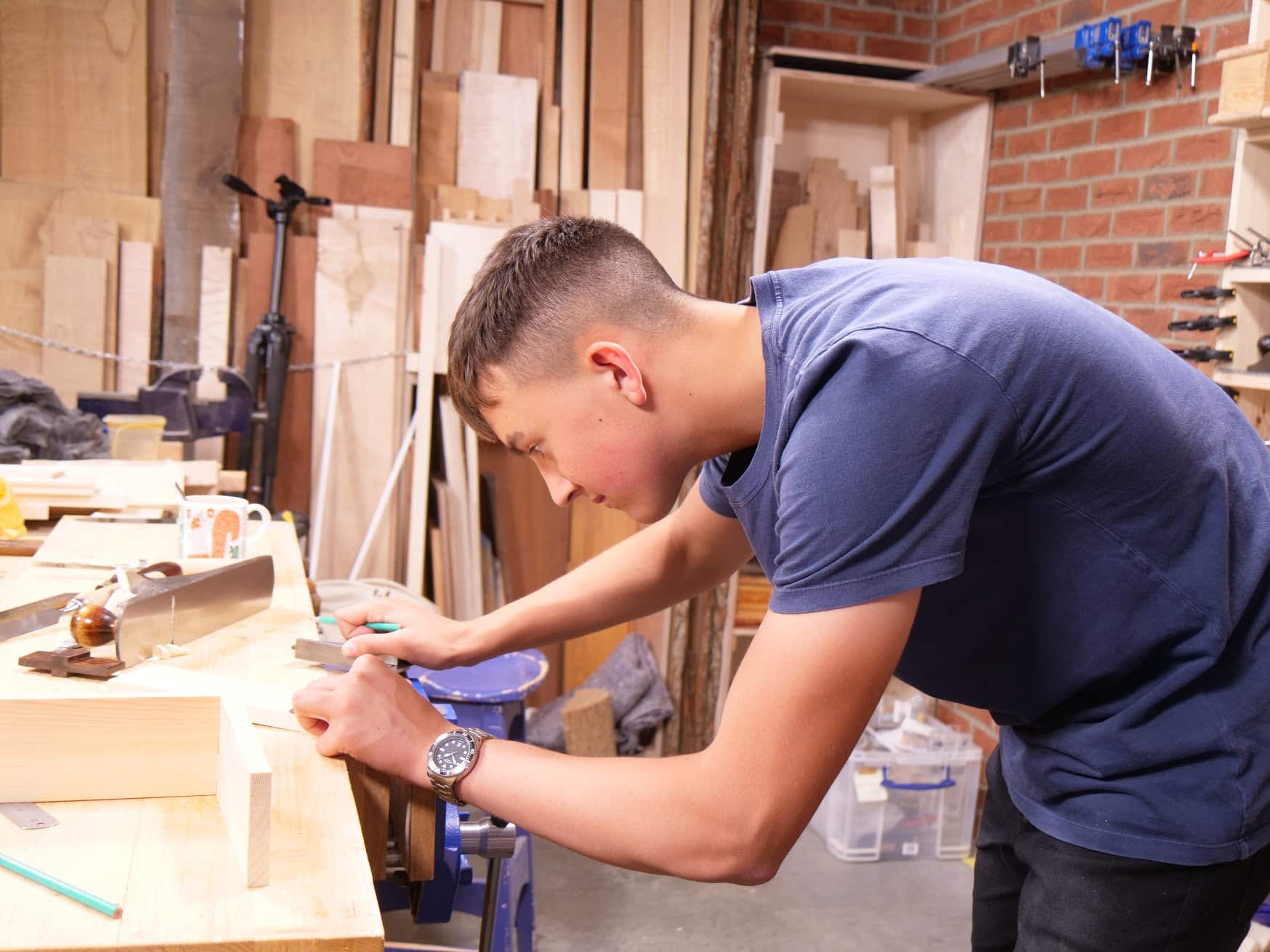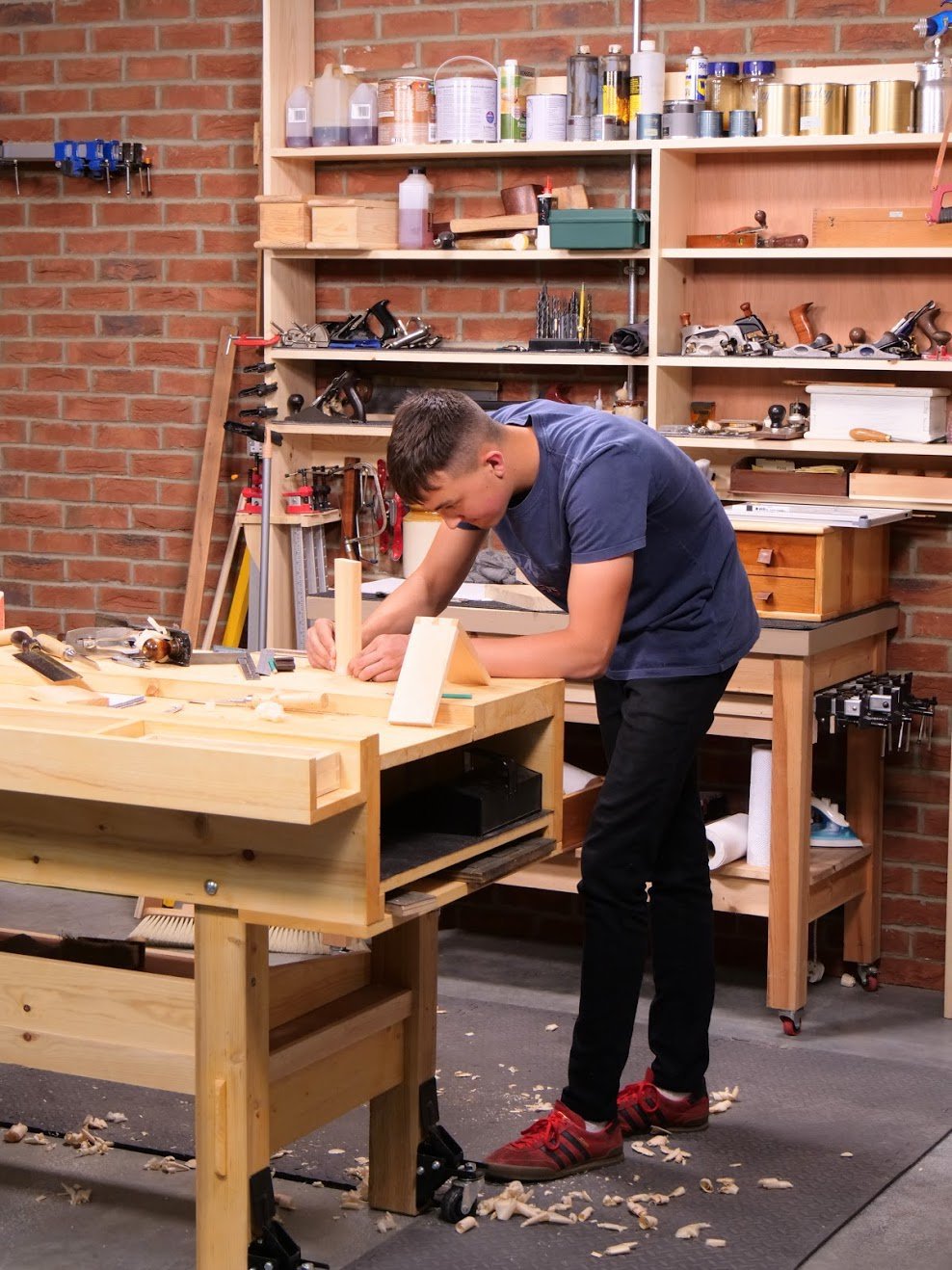Push-Me-Pull You Seesawing


This past week my grandson came for five days of work experience with us, to learn about what life would be like when he started working. Mostly he was involved with the whole of our work, including much of the technical side, but some woodworking too. One thing I noticed was how very willing he was. Not just willing to work but willing to ask and search and seek the answers for what he didn’t know and then to provide answers to things too. Bright, willing, open to learn. All the ingredients I generally find in young people. Picking up the saw I saw the age-old issue of reverse action to start the western saw. I queried the method:
‘I just wondered why you were pulling the saw?’
“Ah, that’s what my teacher taught me to do. Three strokes backwards and none forward” He answered.
‘Oh, I see.’ I said. ‘Did you think to ask why?‘
“No, I just thought she would know best.”
Of course I didn’t want to undermine his teacher. I did tell him to always question the authority though. Not the authority of the teacher per se but just what was the source of the information and was it indeed right.
It is a common belief that to start a western type saw it is best to pull it back and scratch the surface with the teeth first. Western saws cut on the push stroke and no one is inferring that the saw is cutting when it is pulled, just that its best to use pull stoke first. These things are difficult to reverse, as we have seen with laying planes on their sides, issues like that. To somehow make a groove to set the saw to its task in is hard for those taught that way to stop doing it and to lighten up on the opening forward stroke with a gentle and light push first. I was taught that school way too. Thankfully I began working with knowledgeable experts just a short time later. Several of them, who stood watching me in a circle. Master craftsmen. One of them took charge of the situation and said, “Put yer thumb up to the side of the saw plate and push forward.” I did. The saw stuck. “Push lighter!” he said. I did. It cut. It cut smoothly, progressively. I never looked back.
As it is with many things woodworking with hand tools, we believe that more elbow power is needed until someone gives us the right tools for the job with the perfected cutting edges too. That’s a myth. A saw continues to cut with zero downward pressure from the hand as long as it is set and sharpened correctly. And it does not matter whether it is a push-stroke saw or a pull-stroke saw. People say that lots of over-the-bench pressure is essential to planing but that’s not altogether true either. Oh well.
Well, of course, there is nothing wrong with a few pulls on the saw, or some extra downward pressure when planing. If it gives you added confidence then go for it. Everyone can do whatever they want. Within a few saw strokes Max got it. He was working the saw like a pro progressively into his dovetails. It took a few minutes for him to understand that the difference surrounding functionality was a well set, well sharpened saw and not necessarily him—something he had never really understood until now.


Guilty! I have always started a saw cut with a couple short backward strokes – don’t know why, perhaps I just saw other people doing it and I just copied though I have always registered the side of the saw on my thumb. I am now feeling foolish to have done so for so long (I’m 60).
Thank you Paul I will henceforth start on the forward stroke – lightly. It’s a habit of course and I never thought to ask why I did so or even to try it on the forward stroke.
Cheers!
Hi Paul
At the risk of sounding daft I need to question authority myself. After 40 years of laying my planes on the side, my old joiner mentors constantly rebuking me if I failed to do so, I’m now slightly confused in the benefits or reason to that now good practices are to lay flat.
Excellent videos Paul thank you.
This video might help:https://www.youtube.com/watch?v=GOlLVtz3RCI
Makes total sense thank you
I usually have the most trouble with 5-7TPI rip saws in starting. I almost always have to start backwards.Is that just so, or can I adjust my technique to start them on the forward. If so can you describe the correction? I must admit that one time I was trying to start a rip cut and I guess I pushed too aggressively and the saw bounced up and took out a chunk of my hand. So, it may be a “gunshy” reaction.
I would also like to know the answer to Bob’s question.
The trick is not really a trick. Totally lighten up on the pressure until the saw is lifted and the teeth just kiss the wood on a very direct forward thrust and the saw will go. Once the opening fibres are pushed in the direction of the thrust-cut it will flow through from then on.
I had the same problem a couple of times, try to reduce the angle, start with a very little angle. This is a problem with big teeth. And don’t push it aggressively you want to bite a small amount of wood when starting.
Keep the hand in such a way that you’ll not get hurt.
Another of Paul’s tricks that helped me tremendously was to “chisel into the knifewall”. Even a 1/32 depth makes a world of difference.
I find that I actually have to “lift” my big 3.5 and 4tpi rips off the wood to get a light enough cut to start on end grain. The plate weight and sharp teeth natural sink in to the wood to deep otherwise.
My favourite woodworking lesson (which I love to share with the kids!) is best expressed here:
“Put yer thumb up to the side of the saw plate and push forward.” I did. The saw stuck. “Push lighter!” he said. I did. It cut.
Most important aspects of life depend on knowing when to push hard and when to be gentle.
After the week in your shop how does your grandson place his plane on the bench. I noticed it lying on the side in the photos.
Aha! Well, he was making dovetails, so therein lies the clue. Anyone!
He will be using the plane to help set up laying out the next phase of cutting dovetails. By setting the stock on the side of a plane then adjusting the height in the vice, the stock is supported so one can make the layout lines from the piece already cut.
Using it to Mark his tails or pins I’m guessing Paul ??
Yes, as a support for his tail piece to keep it level and parallel.
No problem with the contents of your blog; but PLEASE, PLEASE, PLEASE get the words correct in your sentences.
Why in this day must someone always complain? I have never heard Paul claim to be an English teacher. We have an opportunity to learn from a master woodworker.
I am 63 years old, worked in construction much of my adult life and never heard of the methods he teaches. Just wish I had found Paul in my youth.
Don’t spoil it for those of us interested in woodworking and not English composition.
Mostly its because it so easy. Dash of a few critical words, show how good you are at judging people, crush the recipient and move on. No ultimate responsibility. No need to defend me David. Water off a ducks back. Oops, forgot the apostrophes again.I’m not crushed at all.
As a child, I was often told to do things a certain way “because it’s traditional”. I explained to my own children that we follow tradition out of respect for those who went before us when we don’t understand the reason. Once we understand the mechanics of something we can choose do it the old way (traditional) or we can devise our own, better way. This is why I insist handtools be learned before power tools are used.
Thanks for the reply Paul. Glad you let it roll off. Always amazes me when people tune in to this great site to criticize. Keep up the good work.